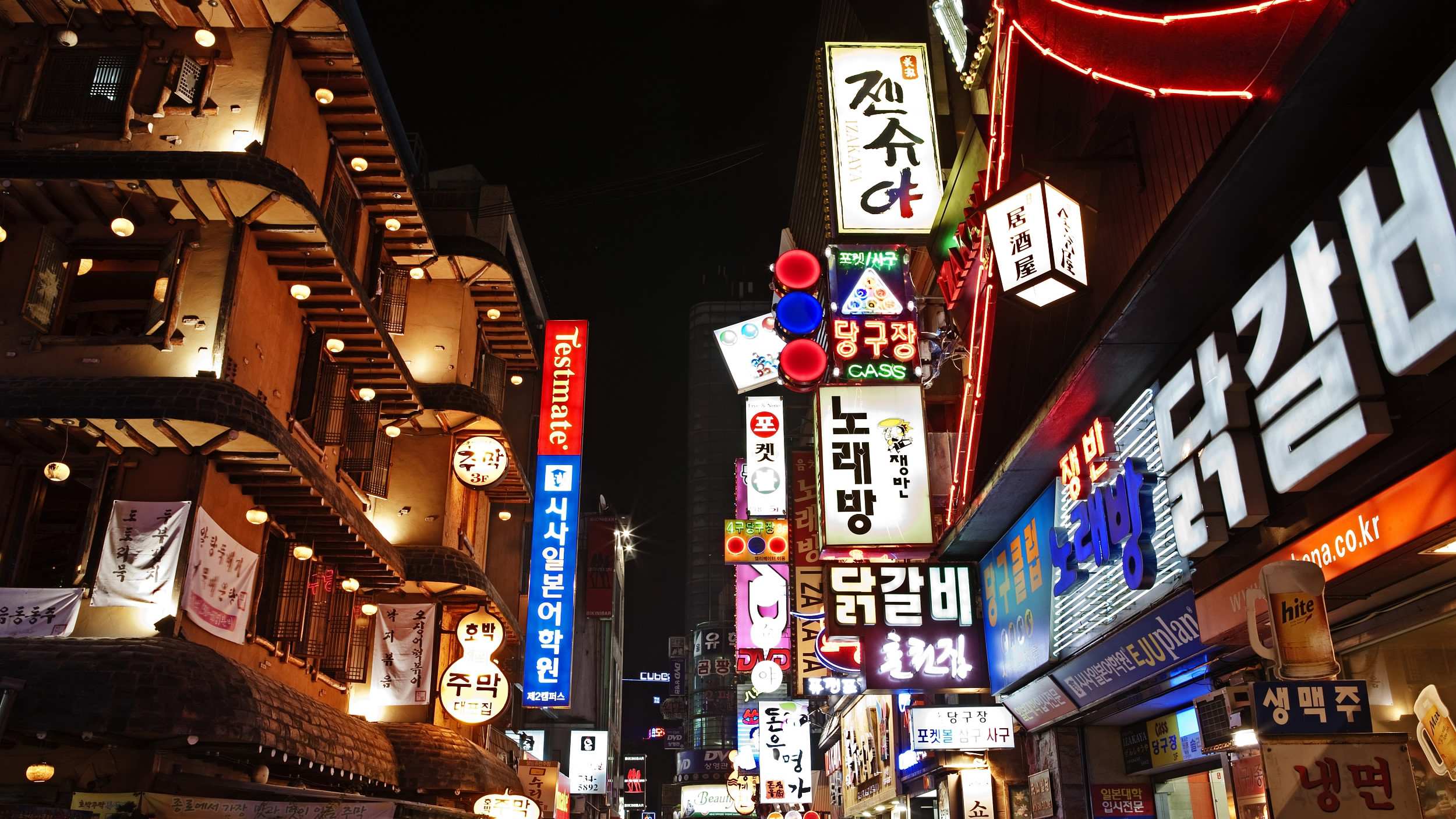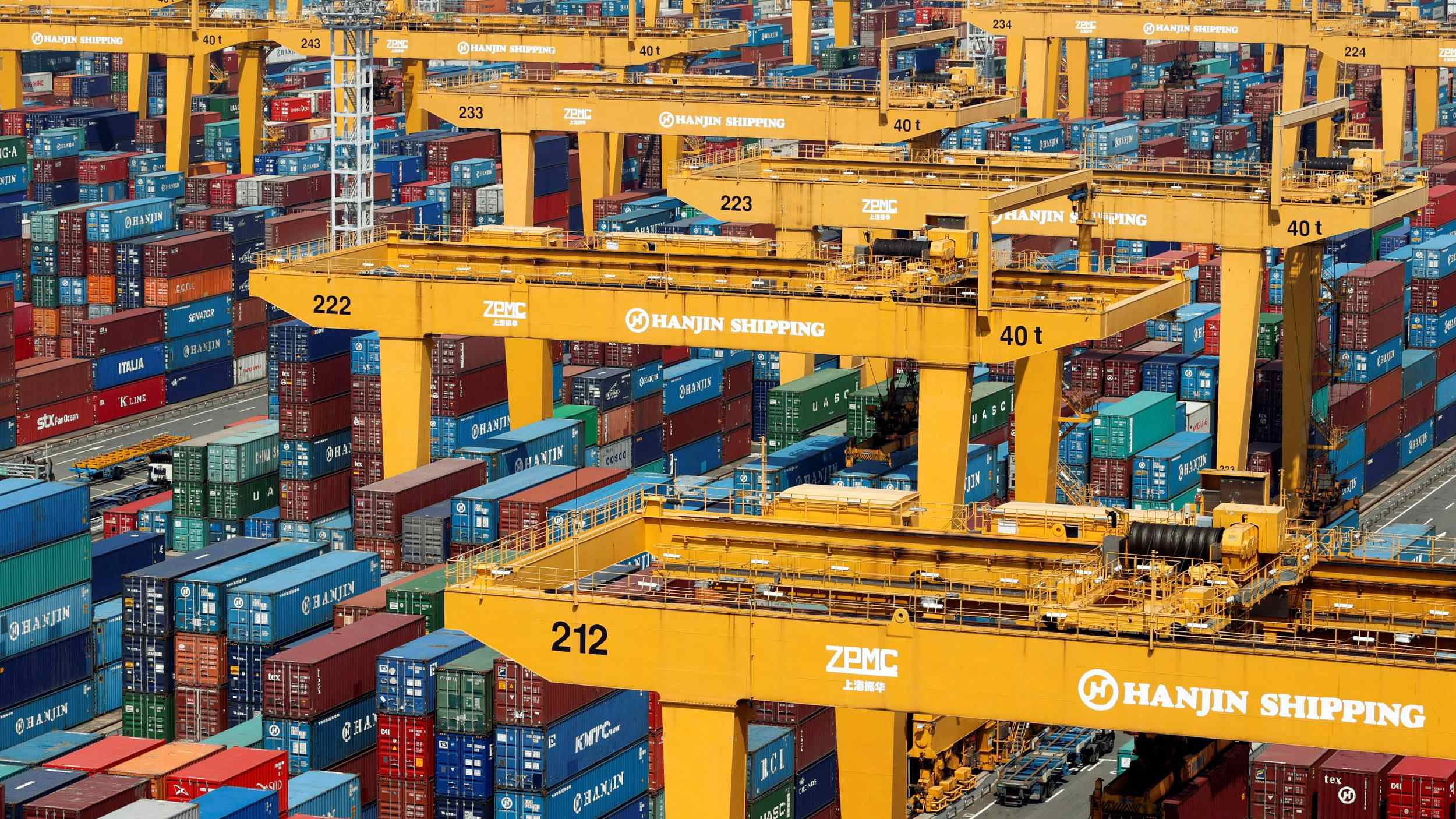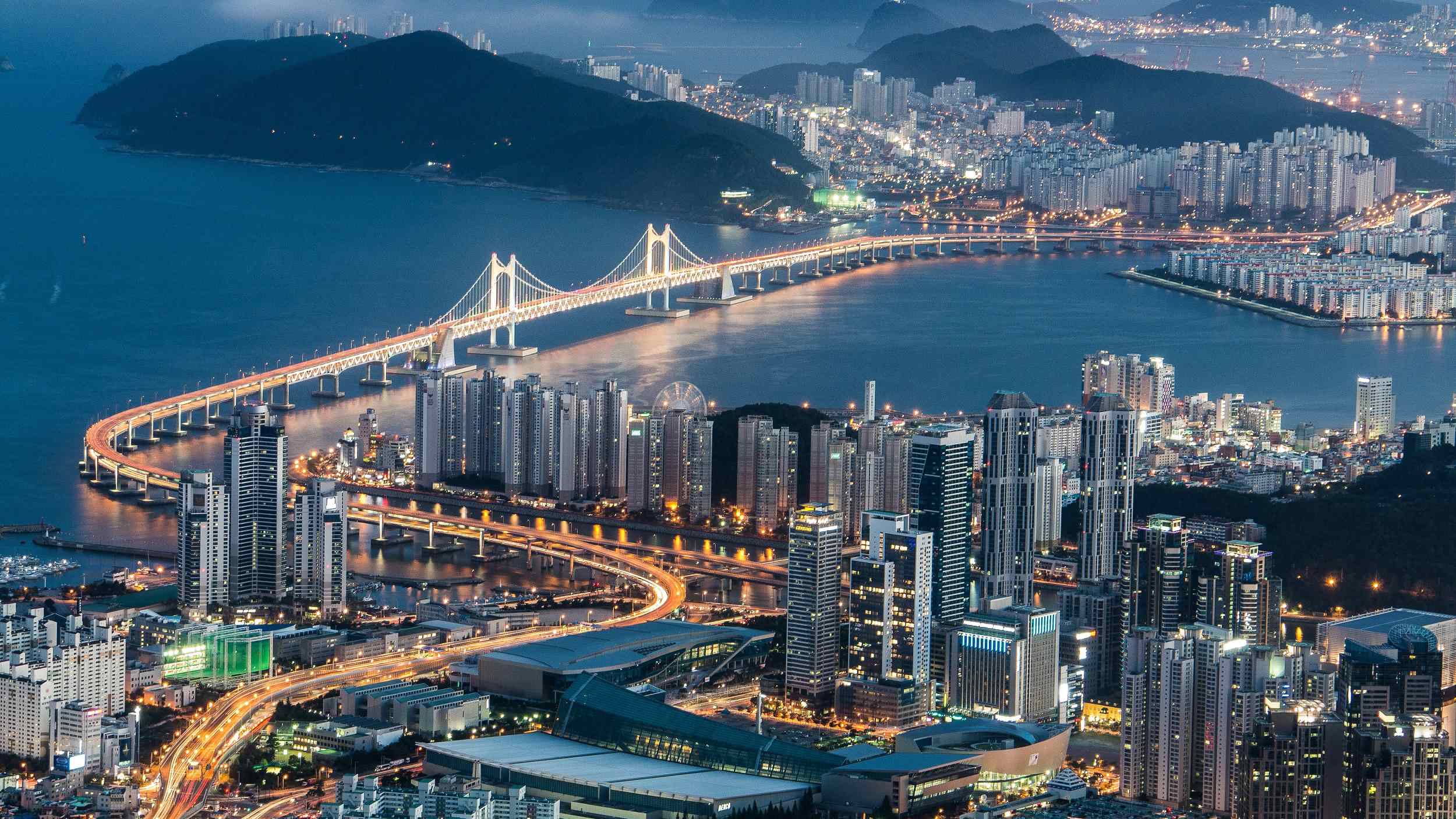
World
17:43, 26-Oct-2017
S. Korea's GDP growth hits seven-year high due to exports
CGTN

S. Korea's gross domestic product (GDP) growth hit the highest in over seven years thanks to robust recovery of electronics-led exports, which account for about half of the export-driven economy, central bank data showed Thursday.
The seasonally-adjusted real GDP was 392.07 trillion won (348.45 billion US dollars) in the July-September quarter, up 1.4 percent from the previous three-month period, according to the Bank of Korea (BOK).
It marked the fastest expansion since the second quarter of 2010, more than doubling a 0.6 percent increase tallied in the prior quarter.
This year's economic growth was expected to surpass the outlooks unveiled by both the government and the BOK.

Hanjin Shipping's container terminal is seen at the Busan New Port in Busan August 8, 2013. /VCG photo
Hanjin Shipping's container terminal is seen at the Busan New Port in Busan August 8, 2013. /VCG photo
Earlier this month, the central bank revised up its 2017 growth forecast to 3 percent, or an identical figure estimated by the government.
After peaking at 3.3 percent in 2014, the country's GDP growth rate stood at 2.8 percent both in 2015 and 2016.
The quarter-over-quarter GDP growth rate fell from 1.1 percent in the first quarter of this year to 0.6 percent in the second quarter, before rebounding to 1.4 percent in the third quarter.
The third-quarter rebound was led by exports, which jumped 6.1 percent from three months earlier.
In September alone, the country's exports hit the largest-ever monthly figure of 55.13 billion US dollars. The exports kept an upward momentum for the 11th consecutive month.
Imports rose 4.5 percent in the September quarter on higher import prices for chemical products and crude oil.
Fiscal spending also helped boost the economic recovery. Fiscal expenditure gained 2.3 percent, logging the highest rise since the first quarter of 2012. The government allocated 11.2 trillion won (about 10 billion US dollars) to the second-half supplementary budget.

Gwangan Bridge in Busan, South Korea /VCG photo
Gwangan Bridge in Busan, South Korea /VCG photo
The Moon Jae-in government, which was inaugurated in May, set its key goal of economic policy at "income-driven growth" to help ordinary people have sufficient money to spend by creating decent jobs and reducing a wage gap between regular and irregular workers and between employees hired by big and small companies.
The Moon administration raised the minimum wage by double digits, promising to turn hundreds of thousands of irregular workers in the public sector into regular employees.
Despite the overall recovery led by robust exports, consumers here refrained from spending money amid remaining uncertainties, such as geopolitical risks on the Korean Peninsula and massive household debts.
Tensions ran high on the peninsula after the Democratic People's Republic of Korea (DPRK)'s sixth and most powerful nuclear test in September and multiple test-launches of ballistic missiles in recent months.
Debt-servicing burden for households was feared to increase in the near future amid widespread expectations that the BOK could raise its record-low policy rate within this year.
According to Reuters, Kim Doo-un, an economist at Hana Financial Investment, now sees a 25 basis point hike in the bank’s next policy meeting in November.
“This kind of robust growth is surely a rate-hike ingredient,” Kim said. “Shipments out of semiconductors and IT sector in general have been good, and it also seems exports of services also improved in the third quarter.”
Source(s): Xinhua News Agency

SITEMAP
Copyright © 2018 CGTN. Beijing ICP prepared NO.16065310-3
Copyright © 2018 CGTN. Beijing ICP prepared NO.16065310-3